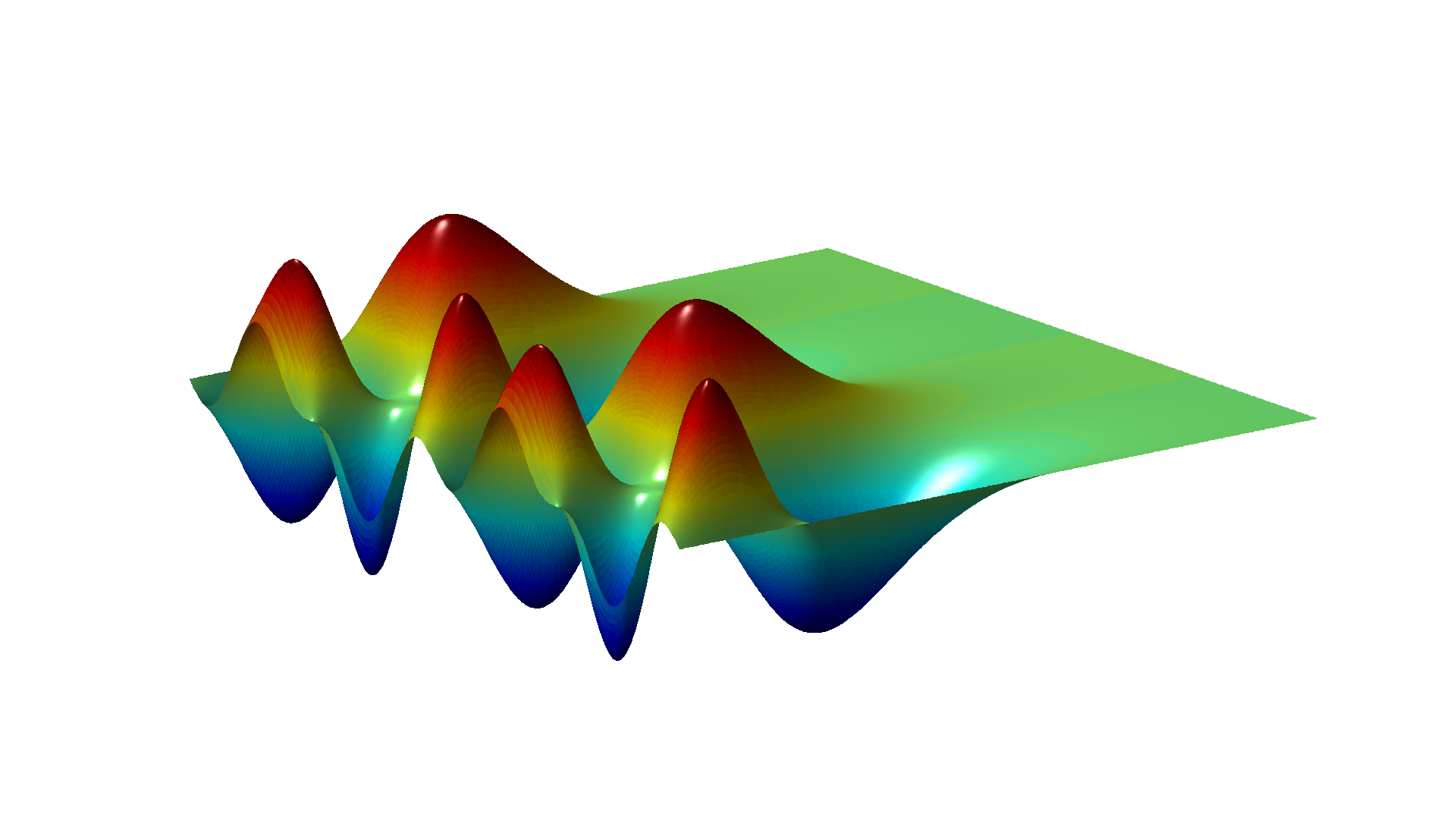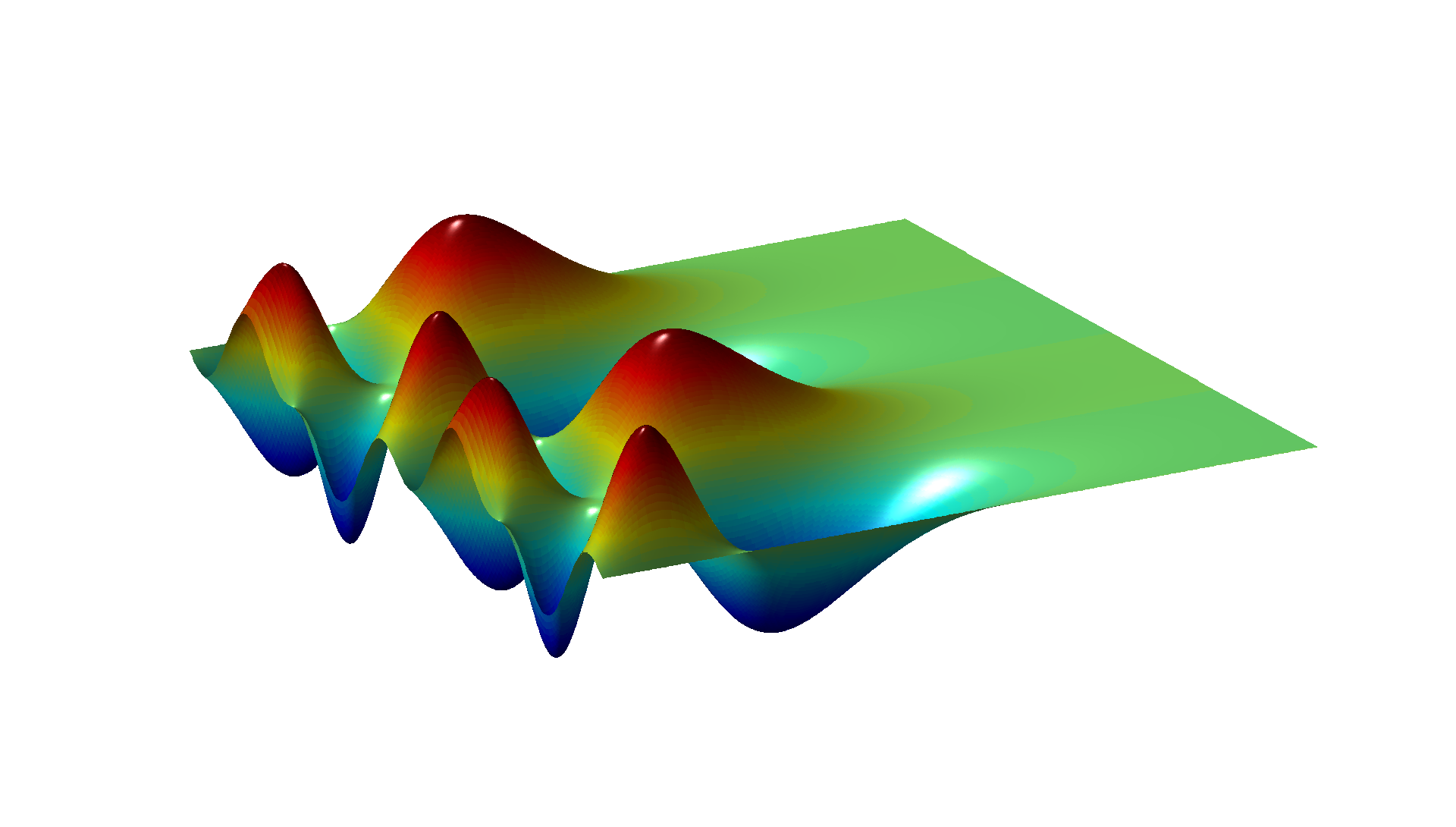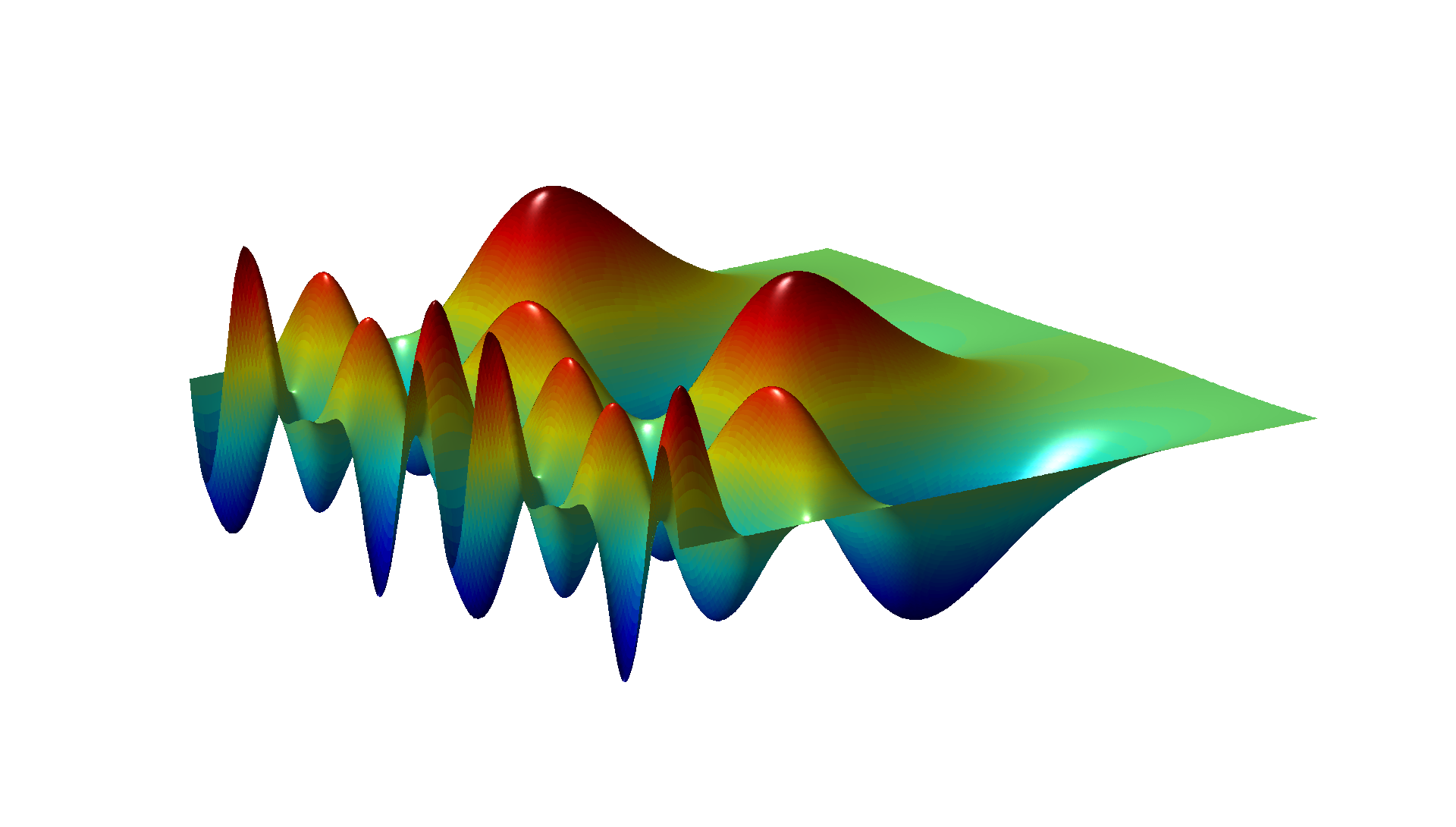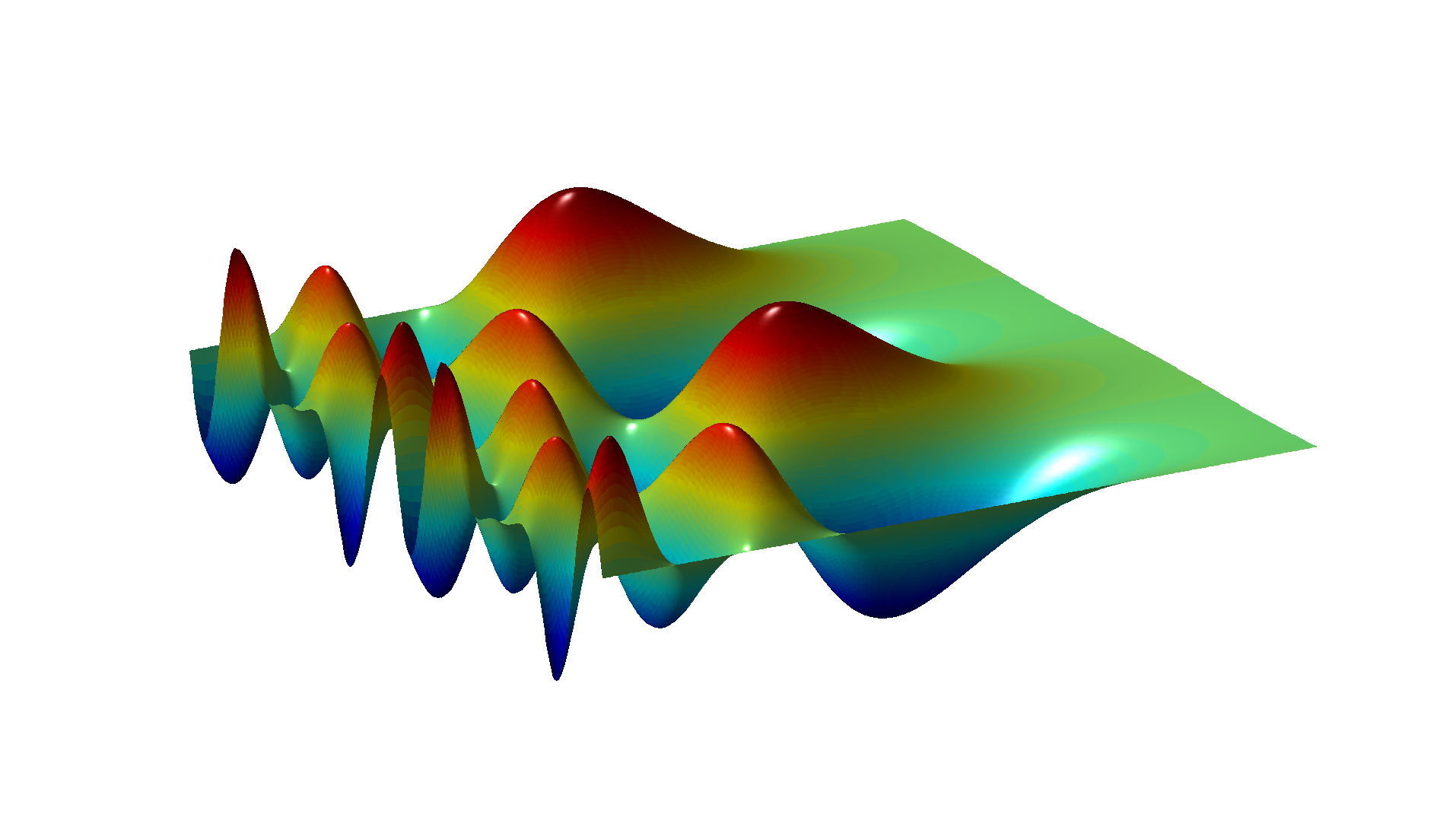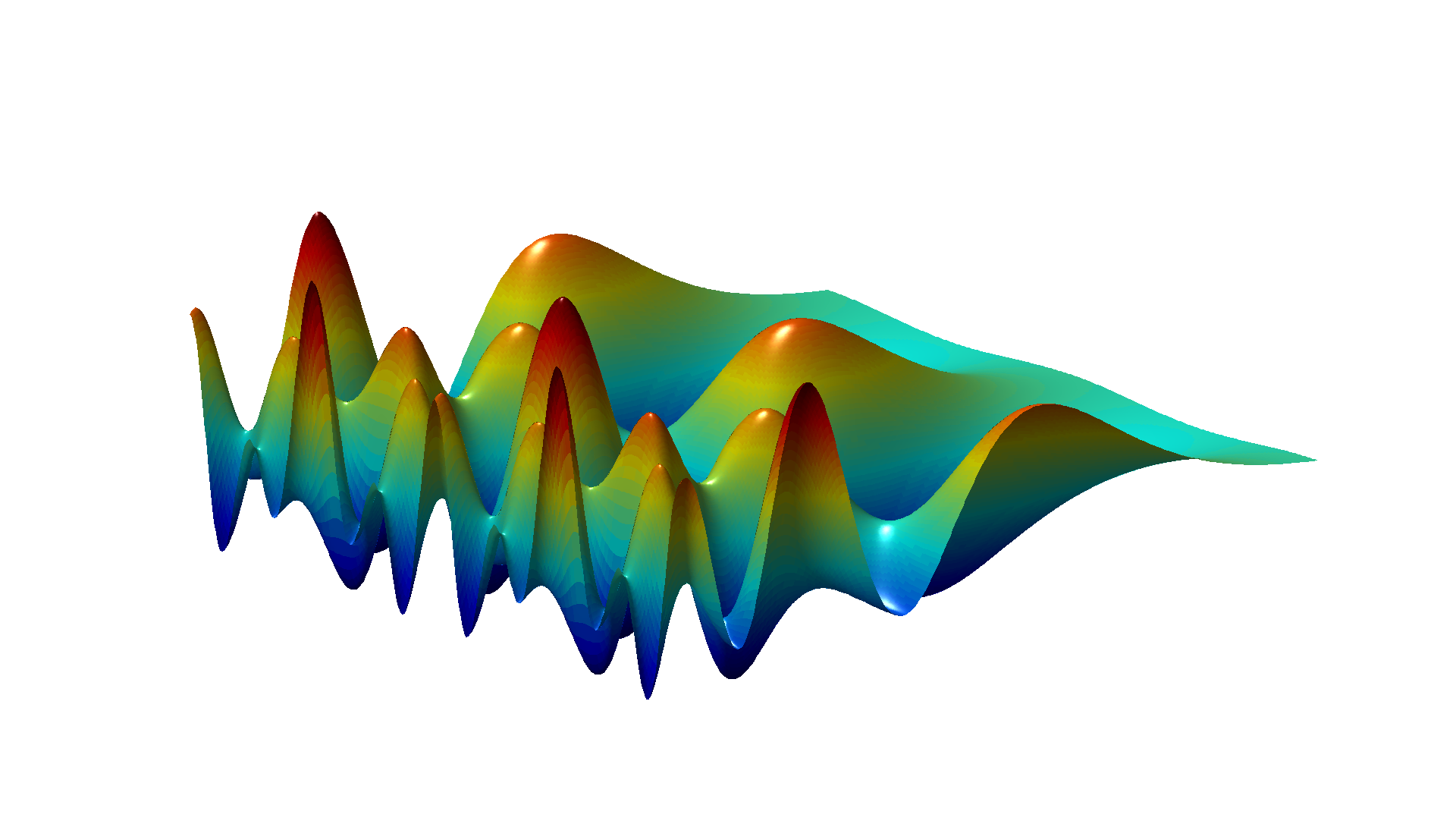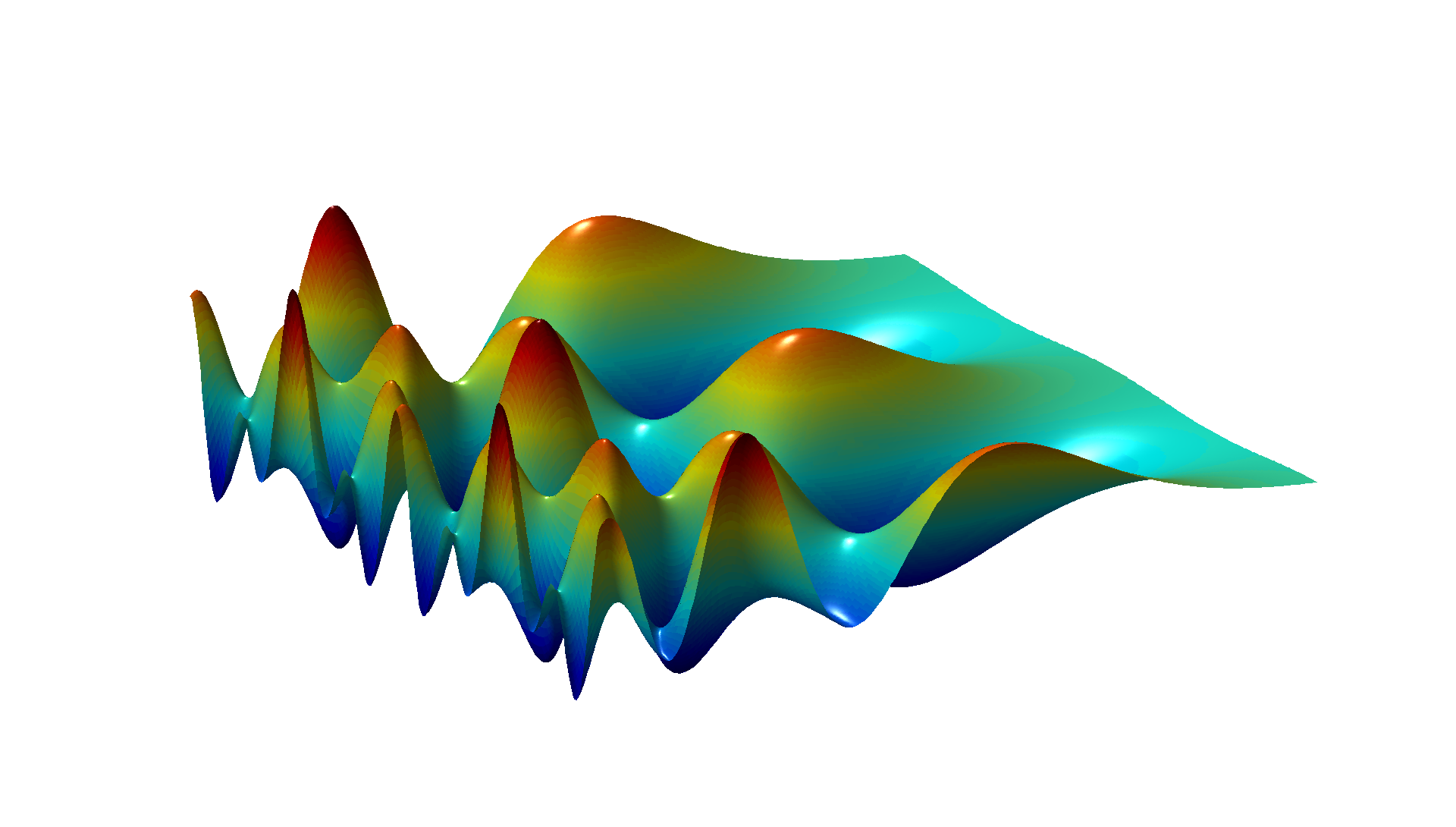The first Maass cusp form for SL2(Z)
The second Maass cusp form
The third Maass cusp form
In these plots -1<x<1 and 0.5<y<3. The left and right figures only differ in the angle of the view.
The code
A cheap way of plotting an approximation of the Maass form is using the
first terms in the Fourier expansion. It requires computing Bessel
function with imaginary argument. This can be done with SAGE. We also
have to know the corresponding eigenvalue (1/4+t^2) and the Fourier
coefficients that can be taken from here or here. Since Octave/Matlab plots finely 3D functions, I have used the following SAGE
code to generate three Octave/Matlab tables containing the data:
###########################################
# MAKE ku1_def.m, ku2_def.m, ku3_def.m #
# WITH THE VALUES OF THE K-BESSEL IN u_j #
###########################################
# number of y in the range [0.5,3]
N = 300
def make_kuj_def(j,t,a):
file = open("ku"+str(j)+"_def.m", "w")
# HEADER
file.write("KU"+str(j)+" = [ ")
for k2 in range(N):
y = (2.5*k2/N+0.5).n()
L = 7*[0.0];
k = 0
while ((2*pi*k*y)<30) and (k<7):
k += 1
L[k-1] = (a[k]*real(bessel_K(I*t,
(2*pi*k*y)))*exp(pi*t/2)*sqrt(y)).n()
# print to file
for k in range(6):
file.write(str(L[k])+',')
file.write(str(L[6]))
if k2==N-1:
file.write(str( ']'))
file.write(str( ';\n'))
file.close()
#######################################
# u1 eigenvalue with t = 9.53369526135
#######################################
t = 9.53369526135
a = [0, 1, -1.0683335512, -0.45619735450, 0.14133657666, -0.2906725549,
0.4873709397983, -0.7449416121475798]
make_kuj_def(1,t,a)
#######################################
# u2 eigenvalue with t = 12.173008324679677
#######################################
t = 12.173008324679677
a = [0, 1, 0.28925187146, -1.201858761, -0.91633335485,
0.039552707287414, -0.347639895856, 0.4481331044912988]
make_kuj_def(2,t,a)
#######################################
# u3 eigenvalue with t = 13.779751351890738
#######################################
t = 13.779751351890738
a = [0, 1, 1.54930447794, 0.2468997724, 1.40034436536, 0.737060385348,
0.382522923065639, -0.26142007576521]
make_kuj_def(3,t,a)
And I run the following Matlab code to plot the data. Octave does not
admit exactly the same options (at least in the version I use).
%%%%%%%%%%%%%%%%%%%%%%%%%%%%%%%%
%% RUN FIRST bess_matlab.sage %%
%%%%%%%%%%%%%%%%%%%%%%%%%%%%%%%%
%%%%%%%%%%%%%
% PLOT u1 %
%%%%%%%%%%%%%
% load data
ku1_def;
N = size(KU1,1);
% meshgrid for u1
U1 = KU1*sin(2*pi*[1:7]'*fliplr(linspace(-1,1, N)));
% plot
figure(1)
surf(linspace(0.5,3, N),linspace(-1,1, N),U1','EdgeColor','none')
colormap jet
camlight left; lighting phong
axis off
% plot
figure(2)
surf(linspace(0.5,3, N),linspace(-1,1, N),U1','EdgeColor','none')
colormap jet
camlight left; lighting phong
view([-30,40])
axis off
%%%%%%%%%%%%%
% PLOT u2 %
%%%%%%%%%%%%%
% load data
ku2_def;
N = size(KU2,1);
% meshgrid for u2
U2 = KU2*sin(2*pi*[1:7]'*fliplr(linspace(-1,1, N)));
% plot
figure(3)
surf(linspace(0.5,3, N),linspace(-1,1, N),U2','EdgeColor','none')
colormap jet
camlight left; lighting phong
axis off
% plot
figure(4)
surf(linspace(0.5,3, N),linspace(-1,1, N),U2','EdgeColor','none')
colormap jet
camlight left; lighting phong
view([-30,40])
axis off
%%%%%%%%%%%%%
% PLOT u3 %
%%%%%%%%%%%%%
% load data
ku3_def;
N = size(KU3,1);
% meshgrid for u3
U3 = KU3*cos(2*pi*[1:7]'*linspace(-1,1, N));
% plot
figure(5)
surf(linspace(0.5,3, N),linspace(-1,1, N),U3','EdgeColor','none')
colormap jet
camlight left; lighting phong
axis off
% plot
figure(6)
surf(linspace(0.5,3, N),linspace(-1,1, N),U3','EdgeColor','none')
colormap jet
camlight left; lighting phong
view([-30,40])
axis off
